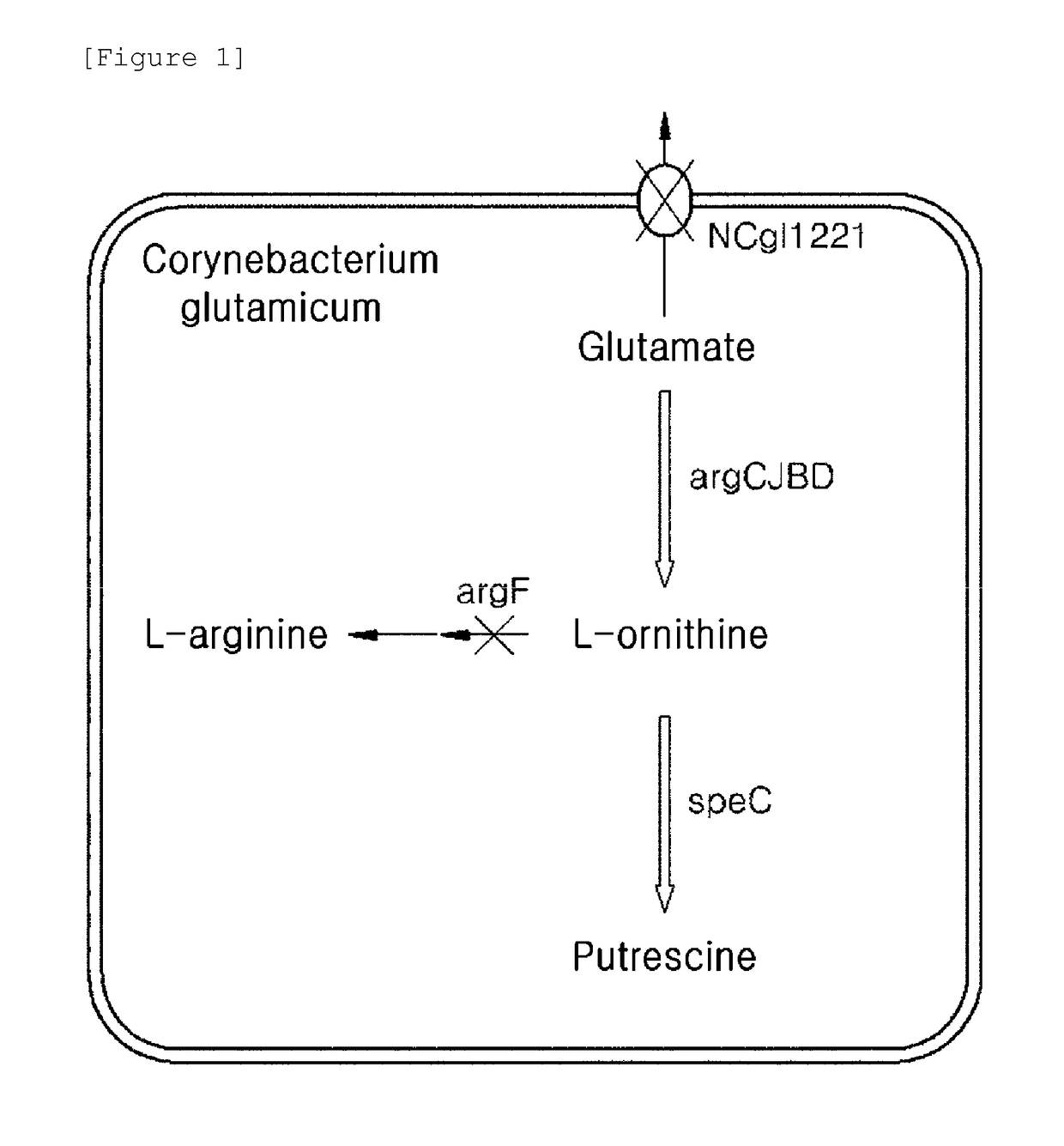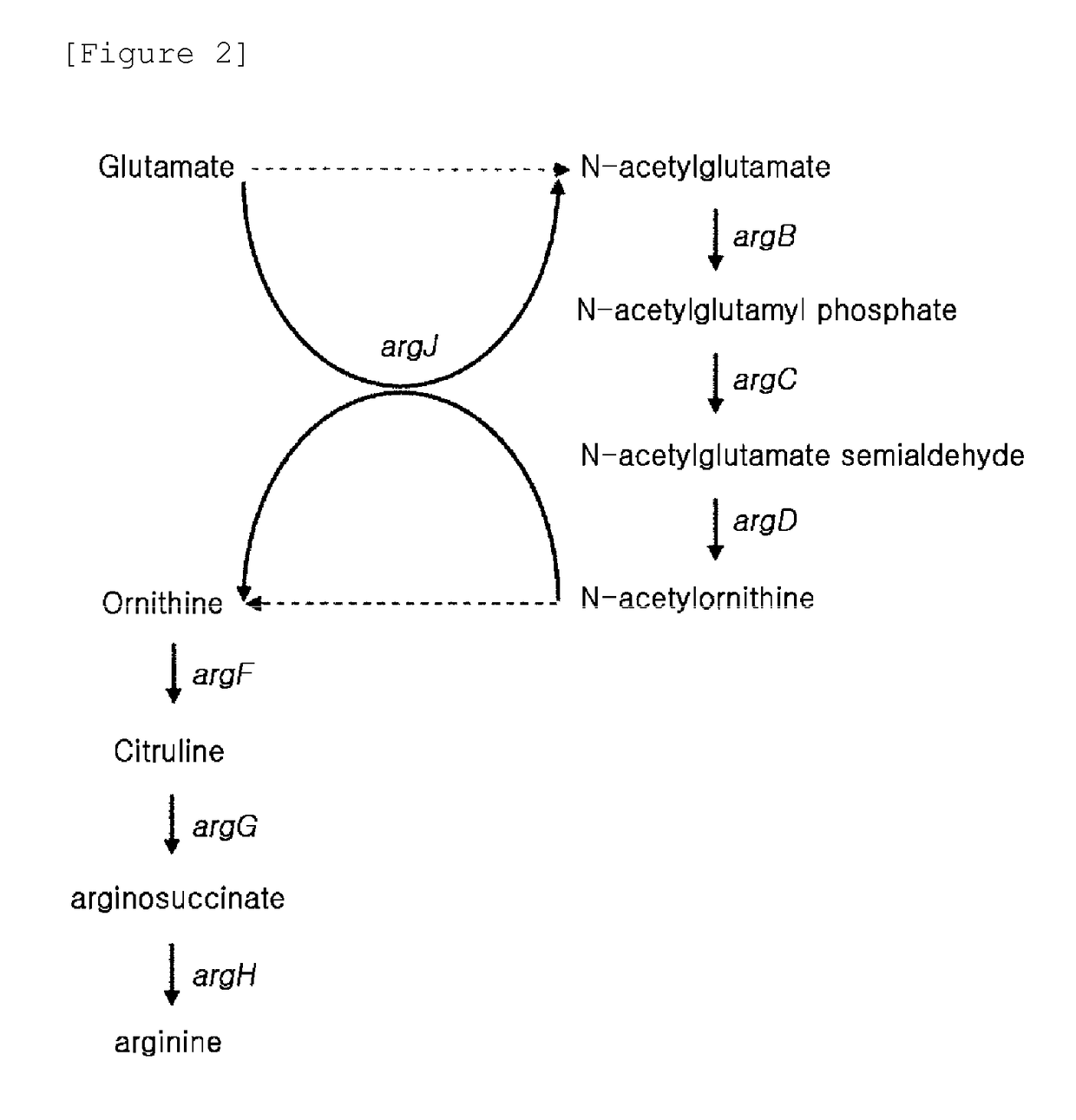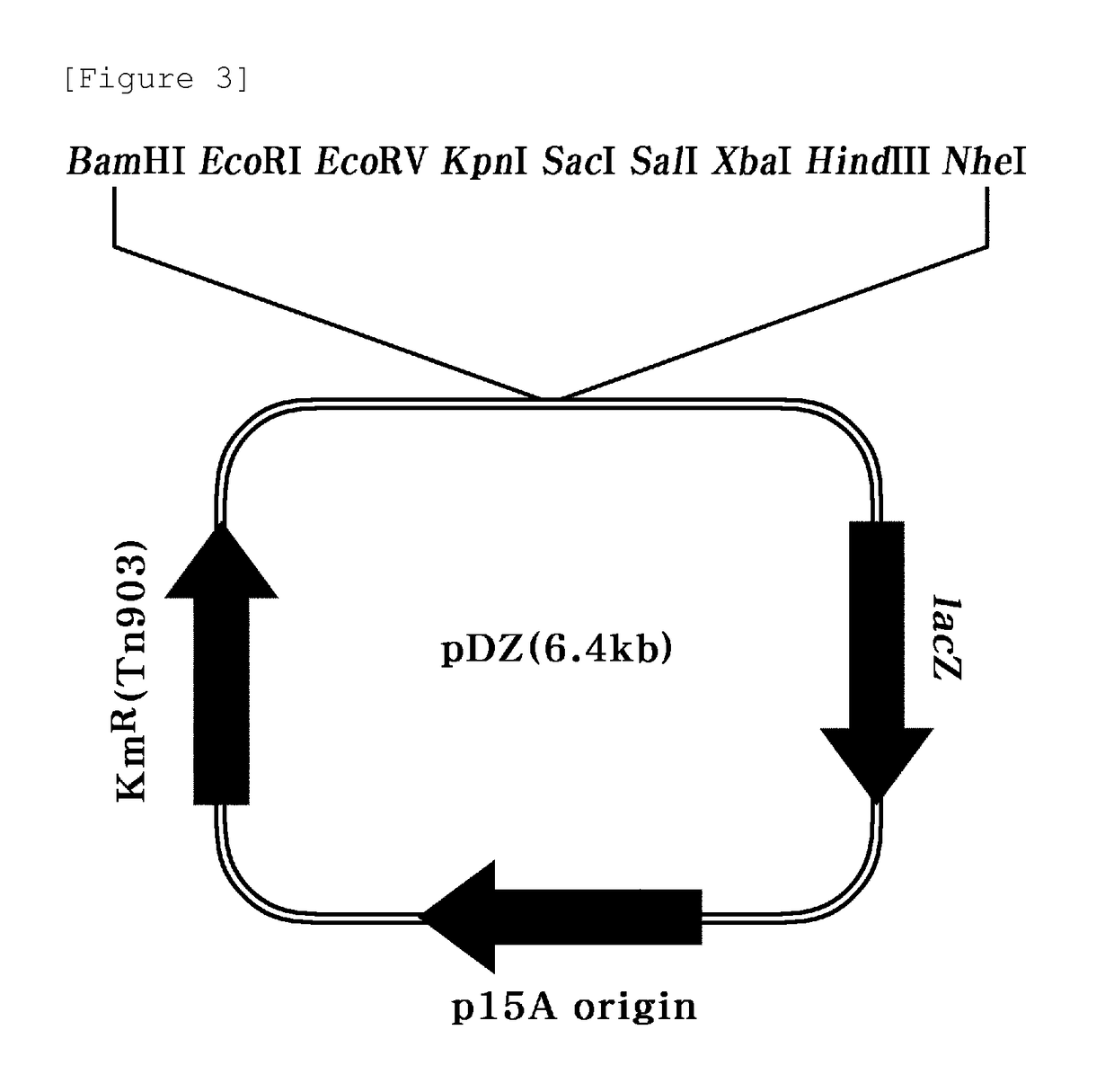Microorganisms for producing putrescine and method for producing putrescine using same
a technology of putrescine and microorganisms, which is applied in the direction of transferases, bacteria based processes, lyases, etc., can solve the problems of consuming a lot of energy, depleting petroleum resources, and not being environmentally friendly in the production of putrescine by chemical synthesis, and achieves the effect of more effective putrescine production
- Summary
- Abstract
- Description
- Claims
- Application Information
AI Technical Summary
Benefits of technology
Problems solved by technology
Method used
Image
Examples
example 3-1
argCJBD Gene and Preparation of Transformant
[0069]In this example, a vector inserted with argC, argJ, argB, and argD genes (SEQ ID Nos. 32, 34, 36, and 38 respectively) was prepared and a transformant was prepared by introducing the same, in order to enhance the ornithine synthetic pathway by increasing the copy number of argCJBD operon (SEQ ID No. 31, comprising the promoter region) which codes for the enzymes involved in a synthetic pathway of ornithine from glutamate.
[0070]First, PCR was performed to obtain argCJBD gene by using the chromosome of ATCC 13032 strain as a template and primers (SEQ ID Nos. 9 and 10) (30 cycles of denaturation for 40 seconds at 95° C., annealing for 40 seconds at 55° C., and extension for 150 seconds at 72° C.), thereby obtaining a gene fragment having a size of 4,900 bp.
[0071]
TABLE 3 Primers to obtain argCJBD gene fragment ofATCC 13032SEQ IDNameNo.Sequence(5′-3′)P_argC-5- 9CGGGGTACCCTCCTCCAGCAGCTCTAGCTCKpnI(SEQ ID NO: 9)argD-3_XbaI10TGCTCTAGAAAGTTTGA...
example 3-2
n of the Promoter of argCJBD Gene in the Chromosome
[0074]In this example, a promoter of argCJBD was substituted with CJ7 promoter which was newly developed by the present applicant in the chromosome, in order to increase the expression level by removing the regulation of the argCJBD gene which codes for the enzymes involved in a synthetic pathway of ornithine from glutamate.
[0075]First, a homologous recombination fragment comprising a CJ7 promoter and a nucleotide sequence of both terminal sites of the promoter was prepared.
[0076]To be specific, the nucleotide sequence of 5′-terminal site of CJ7 promoter was obtained by performing PCR using the genomic DNA from ATCC 13032 strain as a template and primers (SEQ ID Nos. 11 and 12) (28 cycles of denaturation for 30 seconds at 94° C., annealing for 30 seconds at 55° C., and extension for 30 seconds at 72° C.). Likewise, the nucleotide sequence of CJ7 promoter region was obtained by PCR using primers (SEQ ID Nos. 13 and 14) under same PCR...
example 4-1
of Expression Vector Comprising a Gene Fragment of ODC
[0082]In order to introduce the speC gene derived from E. coli (SEQ ID No. 40) into Corynebacterium glutamicum strain, speC gene was cloned into the vector along with a CJ7 promoter having SEQ ID No. 42 such that speC is expressed from the CJ7 promoter.
[0083]First, a nucleotide sequence of CJ7 promoter region was obtained by performing PCR using p117-CJ7-gfp (Korea Patent Registration No. 10620092) as a template and primers (SEQ ID Nos. 17 and 18) (30 cycles of denaturation for 40 seconds at 94° C., annealing for 40 seconds at 55° C., and extension for 60 seconds at 72° C.), and a nucleotide sequence of peC-coding region was obtained by performing PCR using the chromosome of wild-type E. coli strain W3110 as a template and primers (SEQ ID Nos. 19 and 20) under the same PCR condition.
[0084]
TABLE 5 Primers to obtain the P(CJ7)-speC gene fragmentNameSEQ ID No.Sequence (5′-3′)CJ7-5-KpnI17CGGGGTACCGCCGGCATAGCCTACCGATG(SEQ ID NO: 17)CJ...
PUM
| Property | Measurement | Unit |
|---|---|---|
| pH | aaaaa | aaaaa |
| pH | aaaaa | aaaaa |
| pH | aaaaa | aaaaa |
Abstract
Description
Claims
Application Information
 Login to View More
Login to View More - R&D
- Intellectual Property
- Life Sciences
- Materials
- Tech Scout
- Unparalleled Data Quality
- Higher Quality Content
- 60% Fewer Hallucinations
Browse by: Latest US Patents, China's latest patents, Technical Efficacy Thesaurus, Application Domain, Technology Topic, Popular Technical Reports.
© 2025 PatSnap. All rights reserved.Legal|Privacy policy|Modern Slavery Act Transparency Statement|Sitemap|About US| Contact US: help@patsnap.com



